Research areas

LabH6: Passive optical fibers for nuclear instrumentation
Many high energy physics facilities, the nuclear or dismantling industries require single-mode or multi-mode optical fibers operating in the infrared domain, most often at Telecom wavelengths: 1310 nm and 1550 nm. These optical fibers are used for data transfer or serve as sensitive elements to distributed sensors of temperature, strain, liquid levels...
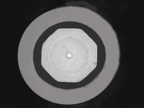
LabH6: Optical fibers, optical amplifiers and fiber lasers
Rare earth ion doped fibers (Er3+, Yb3+ or Er/Yb) are crucial elements in the design of optical amplifiers or fiber lasers. These components are then used in more complex systems such as fiber optic gyroscopes or high-speed free-space optical communications. Radiation tests show that commercial active optical fibers, components and associated systems are highly vulnerable to space radiations.
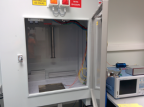
LabH6: Optical fibers for distributed ionizing dose measurement
Studies are being conducted in close collaboration with CERN to define and qualify a distributed dosimetry solution. By combining a radio-sensitive fiber with an optical reflectometer, the dose can be measured along a fiber with a sub-metric resolution.

LabH6: “Canonic” optical fibers for fundamental studies
To become able to control the radiation response of optical fibers, it is necessary to identify the nature, the optical properties, the generation and bleaching mechanisms of these defects. The ultimate goal of these fundamental studies is to predict, through simulation, the response of an optical fiber for a given application and specific environment.

LabH6: “New specialty optical fibers
Different applications require the development of dedicated optical fibers. Those fibers must then have their optical properties optimized for the intended application, obtained by working on their refractive index profiles and/or compositions.
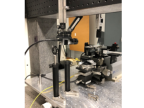
LABH6: Optical Fiber Bragg Gratings
Fiber Bragg gratings (FBG) are the most widely deployed optical fiber sensors in the various nuclear environments, mainly for local (point) temperature or strain measurements.
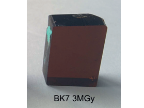
CAMRAD : PIA project
The industrial research project, CAMRAD, seeks to develop and test, under real conditions, a high-performance (colour camera, high sensitivity and high resolution) imaging system that is resistant to ionising radiation (over 1 MGy) for characterizing nuclear waste and general use in the nuclear industry

CERTYF : PIA project
CERTYF is a fundamental research project with the aim of improving the understanding of the basic mechanisms governing the degradation of optical fibres (loss of some optical properties via a radiation-induced attenuation phenomenon) in complex environments combining the following stresses: temperature, radiation and hydrogen.
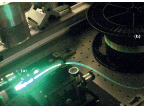
SURFIN : PIA project
SURFIN aims to characterize new luminescent vitreous materials, based on doped silica (intentional implantation of some elements to modify the properties of optical fibers), and to implement them in fiber solutions for in situ dosimetry of different radiation environments (X, γ, …).
